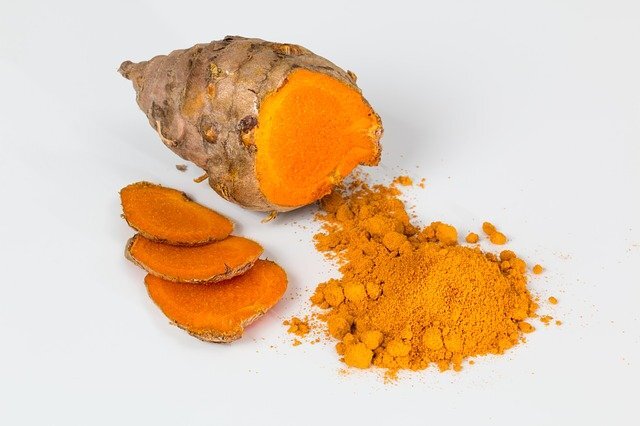Curcumin - Health benefits
Curcumin is a naturally occurring, bright yellow chemical in Turmeric and several other plants in the ginger family. It’s located within the rhizome, or stem, of the Turmeric plant. Turmeric has a several-thousand-year history in Indian cuisine and Ayurvedic Medicine, but it wasn’t until 1815 that Curcumin was isolated and extracted. It took another century after that before Curcumin’s chemical structure was fully mapped and studied.
Turmeric’s Centuries of Spiritual and Physical Healing
Turmeric has been used as a medicine for over 4,500 years, and ancient pots found near New Delhi dating back to as early as 2500 BCE contained residue from Turmeric and ginger. In India, it was traditionally used for upper respiratory tract, joints, skin disorders and digestive system troubles.
Perhaps even more interesting than the medicinal history of Turmeric is its spiritual history. The golden yellow color of Turmeric was believed to connect the plant to the sun, which Indian natives worshiped as a deity. Creams, pastes, and powders were also worn in religious rituals and marital ceremonies for both cosmetic and spiritual purposes. Dried Turmeric roots were sometimes worn to ward off evil and provide spiritual and physical protection. It was often used as a textile dye as well.
A Miracle Ingredient
Turmeric is a natural antiseptic and antibacterial herb that’s able to neutralize free radical damage. It supports the immune system, provides cardiovascular and digestive support, improves allergies so less symptoms are present, relieves joint pain, improves skin health and helps hair growth, and even helps with anxiety and depression.
Traditionally, Turmeric has been used in a variety of forms. Milk boiled with sugar and Turmeric root was used as cold medicine; the smoke from burning Turmeric powder was used to relieve stings from insects and scorpions; Turmeric juice was used as a topical healing solution for bruises and cuts.
How Curcumin Differs From Turmeric
Curcumin comes from the Turmeric plant, so they’re the same, and yet, they’re different. The ability to isolate Curcumin from Turmeric has allowed scientists to study its medicinal properties alone. Clinical trials with ailments such as cancer, arthritis, Crohn’s disease, irritable bowel disease, diabetes, and many more have found that Curcumin works effectively to reduce inflammation (thus reducing the painful symptoms of many ailments) and even shows great promise in fighting cancer. Further research is still needed to fully understand Curcumin’s powerful effects; however, researchers believe it works by blocking the effects of multiple enzymes responsible for inflammation.
According to one study, Curcumin can combat hair loss and stimulate new hair growth because it has the ability to suppress abnormal androgen receptor (AR) expression and decrease high levels of dihydrotestosterone (DHT.) Curcumin treatment also reduced wound-healing time, strengthened the immune system, and improved and increased collagen.
Curcumin’s anti-inflammatory properties and wound-healing abilities make it an advantageous ingredient to include in your medicine cabinet. While we can’t guarantee that the Curcumin content of KhaliliTM Natural Pain Relief Cream will protect you from evil spirits or connect you with a solar deity, we can guarantee that it will help relieve muscle and joint pains!

